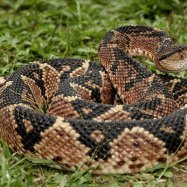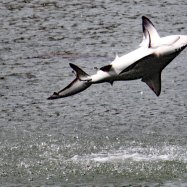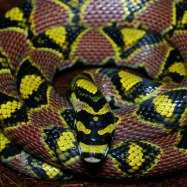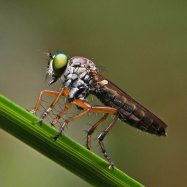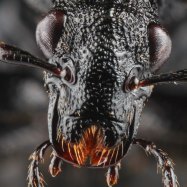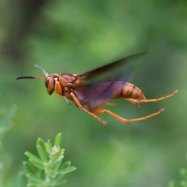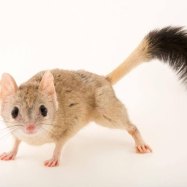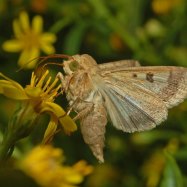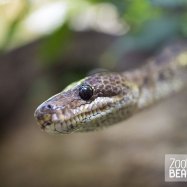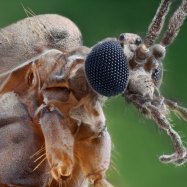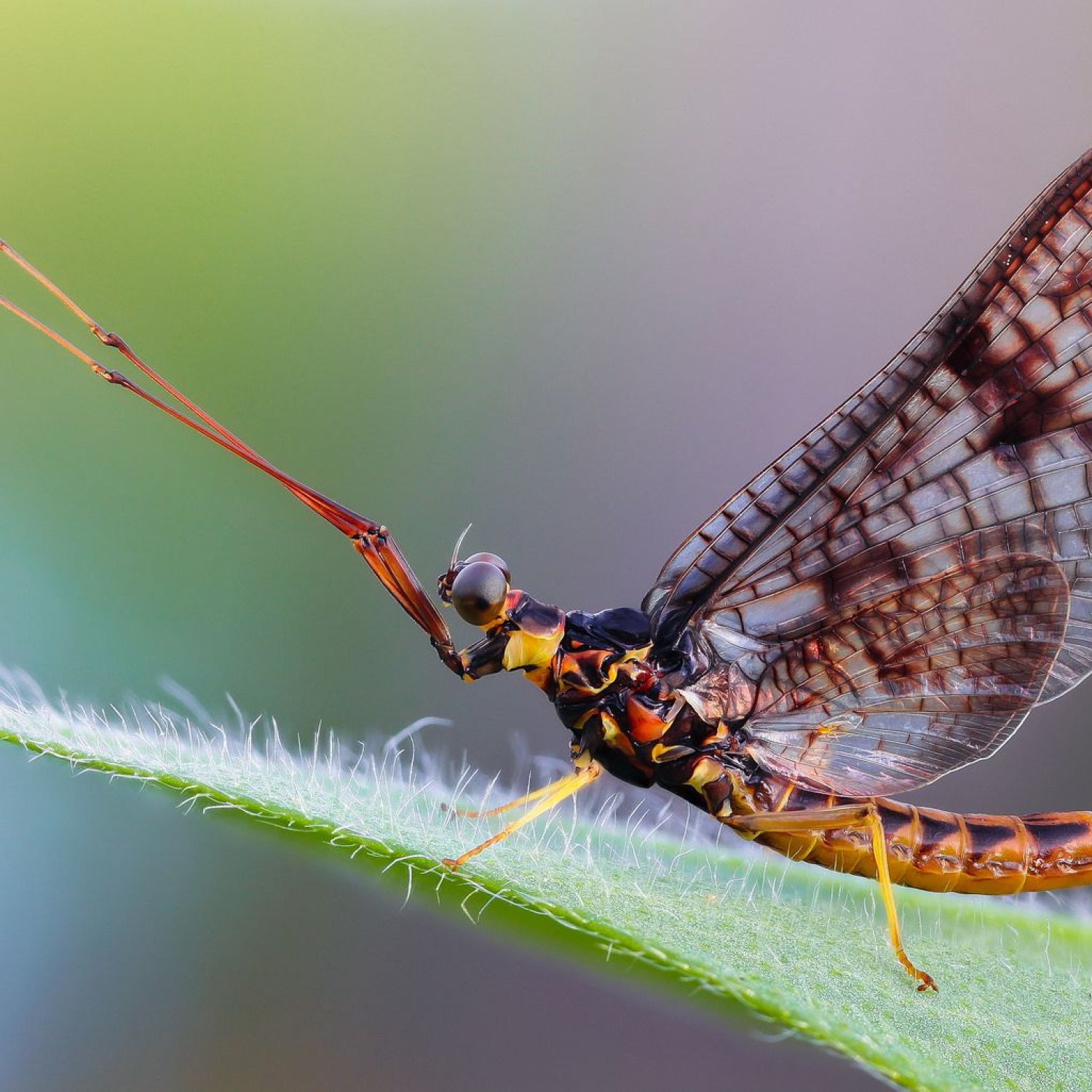
Mayfly
6 - 25 mm (nymphs) and 10 - 30 mm (adults)
The mayfly, also known as the dayfly, is a small insect that can be found in various bodies of water such as lakes, rivers, and streams. With a slim body and two or three long tails, these creatures can measure anywhere from 6 to 25mm (as nymphs) and 10 to 30mm (as adults). Despite their short lifespan, they play a crucial role in our ecosystem as a food source for fish and birds.
Animal Details Summary:
Common Name: Mayfly
Kingdom: Animalia
Habitat: Freshwater
Nature's Aquatic Marvel: The Fascinating Mayfly
They emerge from the depths of freshwater, their delicate bodies glistening in the sun. In a graceful dance, they take flight, their lifespan measured in mere days. These are the mayflies, a fascinating insect that has captured the attention of nature lovers and scientists alike. From their brief existence to their important role in the ecosystem, there is so much to learn about these small but mighty creatures Mayfly.The Basics: Meet the Mayfly
The mayfly belongs to the order Ephemeroptera, with the scientific name Ephemeroptera. This name comes from the Greek words "ephemera" meaning "short-lived" and "ptera" meaning "wings". And true to their name, mayflies have one of the shortest lifespans of any insect, ranging from a few hours to a few days.They are commonly known as mayflies, but some refer to them as "shadflies" or "dayflies". These names come from their emergence in the month of May and their brief hours of life.
Mayflies belong to the Animalia kingdom and the Arthropoda phylum, which includes insects, crustaceans, and arachnids. They are classified as insects in the Insecta class, with over 3,000 species worldwide, found on every continent except Antarctica.
A Life of Three Stages
Mayflies have a fascinating life cycle, consisting of three distinct stages – the nymph, dun, and spinner. Each stage has its own unique characteristics and serves a specific purpose in the mayfly's short life Miki.The nymph stage, also known as the immature or larval stage, is the longest stage of a mayfly's life. It can last anywhere from a few months to a few years, depending on the species. During this stage, mayflies live in freshwater habitats such as lakes, rivers, streams, and ponds, where they burrow into the sediment at the bottom and feed on algae and other aquatic plants.
The nymph's body is flat and slender, with six legs, two antennae, and three long, thin tails. These tails serve as a useful adaptation for swimming and steering in the water. They also have gills along their abdomen, allowing them to absorb oxygen from the water.
The second stage, the dun, is the transitional stage for mayflies. It is during this stage that they emerge from the water, shedding their exoskeleton to reveal their wings and flying to the surface. This process is called "emerging" or "hatching" and usually happens when water temperatures are favorable, typically in the spring or summer.
Mayflies in their adult form, known as spinners, have two sets of wings, making them unique among insects. They only live for a short time, ranging from a few hours to a few days. During this time, they do not feed but instead focus on finding a mate and reproducing.
Feeding and Habitat
Mayflies have a unique feeding pattern that varies between the nymph and adult stages. Nymphs are herbivores, feeding on algae and other aquatic plants. They play a vital role in the aquatic ecosystem by helping to regulate plant growth and serving as prey for larger animals such as fish and birds.Adult mayflies, on the other hand, do not feed at all. This may seem strange, but it serves a critical purpose for their survival. As adults, mayflies focus solely on finding a mate and reproducing. Their short lifespan does not allow for the time to feed, and their main goal is to ensure the survival of their species.
Mayflies are primarily found in freshwater habitats, but some species can also be found near brackish water or in coastal areas. They prefer clear and clean water and are highly sensitive to changes in water quality and pollution. This makes them valuable indicators of water quality in their habitat, and their absence can be a sign of declining water health.
Distribution and Characteristics
Mayflies are found worldwide, except for Antarctica, making them one of the most widespread insect species. They are most abundant in temperate regions, such as North America and Europe, but can also be found in tropical and subtropical regions.Their coloration varies, with most species having light yellow, brown, or green bodies, and transparent wings. This camouflage aids in their survival, making it difficult for predators to spot them in the water.
They have a slim body, measuring between 6-25 mm as a nymph and 10-30 mm as an adult. They have two or three long tails, with some species having longer tails than others. They also have large compound eyes, allowing them to have a wide field of vision and spot potential predators.
The Importance of Mayflies
Despite their short lifespan, mayflies play a crucial role in the ecosystem. As nymphs, they help to regulate the growth of aquatic plants, and as adults, they serve as a food source for many animals. Their presence also indicates a healthy water system, making them important indicators of water quality.Mayflies also provide vital services to humans, such as serving as bait for fishing or as indicators for healthy aquatic systems. In addition, their short lifespan and rapid emergence make them valuable for studying pollution in freshwater systems.
The Fascinating World of Mayflies
The mayfly's short life span may seem insignificant, but their role in the natural world is undeniably important. From their graceful emergence from the water to their crucial contributions to the ecosystem, these delicate creatures have much to teach us about the fragility and resilience of life.Next time you enjoy a peaceful day by the lake or pond, take a closer look and marvel at the mayflies dancing on the surface. Their brief existence may be fleeting, but it serves a crucial purpose in the grand scheme of nature.

Mayfly
Animal Details Mayfly - Scientific Name: Ephemeroptera
- Category: Animals M
- Scientific Name: Ephemeroptera
- Common Name: Mayfly
- Kingdom: Animalia
- Phylum: Arthropoda
- Class: Insecta
- Order: Ephemeroptera
- Family: Various families
- Habitat: Freshwater
- Feeding Method: Herbivore (as nymphs) and non-feeding adults
- Geographical Distribution: Worldwide
- Country of Origin: N/A
- Location: Lakes, rivers, streams, and ponds
- Animal Coloration: Varies (usually light yellow, brown, or green)
- Body Shape: Slim body, with two or three long tails
- Length: 6 - 25 mm (nymphs) and 10 - 30 mm (adults)
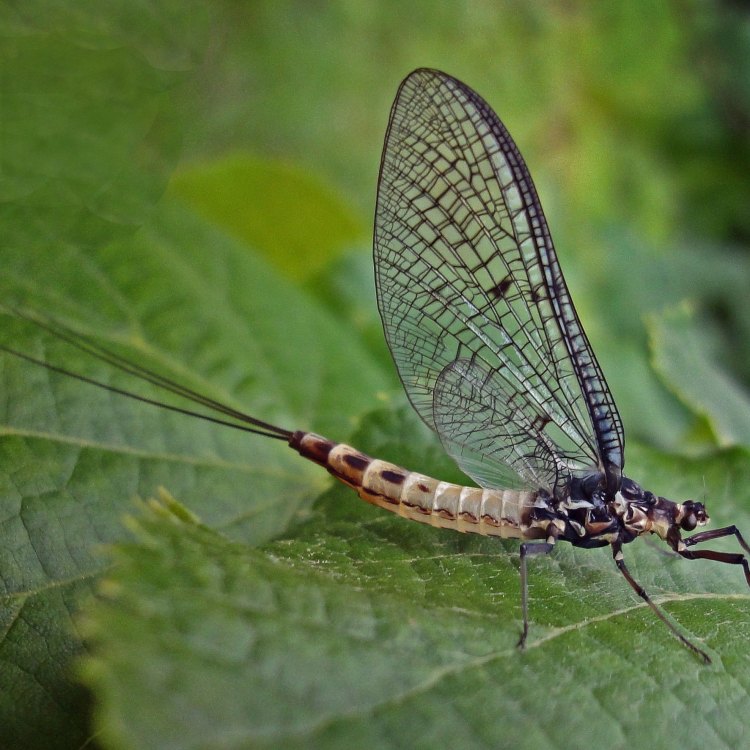
Mayfly
- Adult Size: 10 - 30 mm
- Average Lifespan: 1 - 2 days (adults)
- Reproduction: Sexual
- Reproductive Behavior: Swarm mating
- Sound or Call: No
- Migration Pattern: No
- Social Groups: No
- Behavior: Nymphs are aquatic and spend most of their lives underwater. Adults have short lifespans and do not feed.
- Threats: Pollution, habitat destruction, climate change
- Conservation Status: Varies, with some species listed as endangered
- Impact on Ecosystem: Mayflies play a vital role in freshwater ecosystems as a food source for fish and birds. Their presence indicates good water quality.
- Human Use: Used as bait by fishermen
- Distinctive Features: Large compound eyes, long and delicate wings, slender body
- Interesting Facts: Mayflies are ancient insects that have been around for over 300 million years. They are highly sensitive to pollution and can be used to assess water quality.
- Predator: Fish, birds, and other aquatic invertebrates
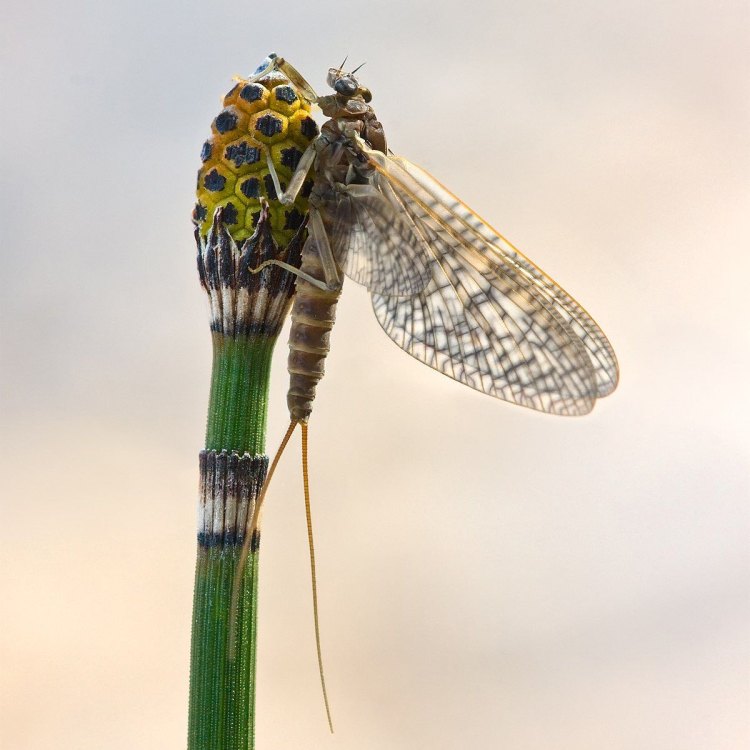
Ephemeroptera
The Incredible Mayfly: A Powerful Symbol of Resilience and Fragility
The fascinating world of insects is one that never ceases to amaze us. From the mighty ants building intricate colonies to the delicate butterflies flitting from flower to flower, each one has its unique role to play in the intricate web of life. However, there is one insect that stands out, not only for its brief existence but its immense significance in aquatic ecosystems – the mayfly.The mayfly, with its delicate and ethereal appearance, has a lifespan that is almost as fleeting as its beauty PeaceOfAnimals.Com. But don't let its short existence fool you, for it is a powerful symbol of resilience and fragility in the face of threats such as pollution and habitat destruction.
A Brief Introduction to the Mayfly
The mayfly (order Ephemeroptera) is a fascinating insect with over 3,000 species found worldwide. They are ancient insects that have been around for over 300 million years, making them one of the oldest insect groups on the planet. In fact, the word "ephemeroptera" comes from the Greek word "ephemeros," meaning "lasting only a day," and "ptera," meaning "wings."These insects have a slender, elongated body with six long legs and two pairs of large, delicate wings. They also have large compound eyes that give them excellent vision, making them efficient at avoiding predators. Mayflies are relatively small, with an adult size ranging from 10 to 30 mm.
The Life Cycle of a Mayfly
The mayfly's life cycle consists of three stages – egg, nymph, and adult. The eggs are laid in freshwater bodies such as rivers, streams, and lakes, where the nymphs will spend most of their lives Markhor. The nymphs are aquatic and are found hiding in the sediment, under rocks, or in aquatic vegetation. They feed on algae, bacteria, and organic matter.Nymphs can take anywhere from a few months to a couple of years to reach adulthood, depending on the species and environmental conditions. When it is time to emerge as adults, they swim to the water's surface and shed their nymphal skin to reveal their wings.
The Short but Fulfilling Life of an Adult Mayfly
Adult mayflies have a short lifespan, with an average of one to two days. During this time, their main objective is to mate and reproduce. The males gather in swarms, producing a cloud of dancing mayflies in the air to attract the females. After mating, the females lay their eggs in the water, and the adult mayflies die soon after. They do not feed during their short adult life, as their primary focus is on reproduction.The Threats Facing Mayflies and Their Importance in Ecosystems
Mayflies may have a short lifespan, but their impact on aquatic ecosystems is significant. They play a vital role as both predators and prey, making them an essential component of the food chain. They are a source of food for fish, birds, and other aquatic invertebrates, and their presence indicates good water quality.However, mayflies are also facing a range of threats, which has led to some species being listed as endangered. Pollution from agricultural runoff, industrial waste, and sewage can be fatal to mayfly nymphs. Habitat destruction, such as the draining of wetlands and destruction of riparian areas, also poses a significant threat to their survival.
Climate change is another threat that has a direct impact on mayflies. Rising temperatures and changes in water quality and flow patterns can impact their reproductive behavior and overall population. In certain areas, pesticides and other chemicals used in agriculture can accumulate in mayflies, affecting their growth and development.
Mayflies as Biological Indicators of Water Quality
Mayflies are incredibly sensitive to pollution, making them excellent biological indicators of water quality. This means that their presence, abundance, and diversity can provide valuable insights into the health of a freshwater ecosystem. If mayflies are thriving, it is an indication of good water quality. On the other hand, a decline or absence of mayflies could signal a problem that needs to be addressed.Their sensitivity to pollution and other environmental factors has made mayflies a popular organism for biomonitoring programs. Researchers and conservationists use their population and abundance data to assess changes in water quality and to identify potential threats to aquatic ecosystems.
Mayflies and Human Use
Mayflies may not have any direct benefits to humans, but they have long been used as bait by fishermen. They are particularly useful for trout fishing, which has led to a market for commercially bred mayflies for sale to anglers.Aside from being used as bait, mayflies are also valuable for their role in ecological research and biomonitoring activities. Their sensitivity to pollution makes them a critical organism in assessing water quality and identifying potential threats to the environment.
The Fascinating World of Mayflies: A Testament to Resilience and Fragility
Mayflies are a unique and fascinating insect with a delicate appearance but a powerful impact on the environment. Their short but fulfilling life cycle serves as a reminder of the fragility of life and the importance of protecting our natural resources.Their sensitivity to pollution and their role as a biological indicator make them a vital species in maintaining healthy aquatic ecosystems. By understanding and protecting these ancient insects, we can also safeguard the environment and ensure its well-being for future generations. Let the mayfly be a symbol of resilience and fragility in the never-ending cycle of life on this planet.
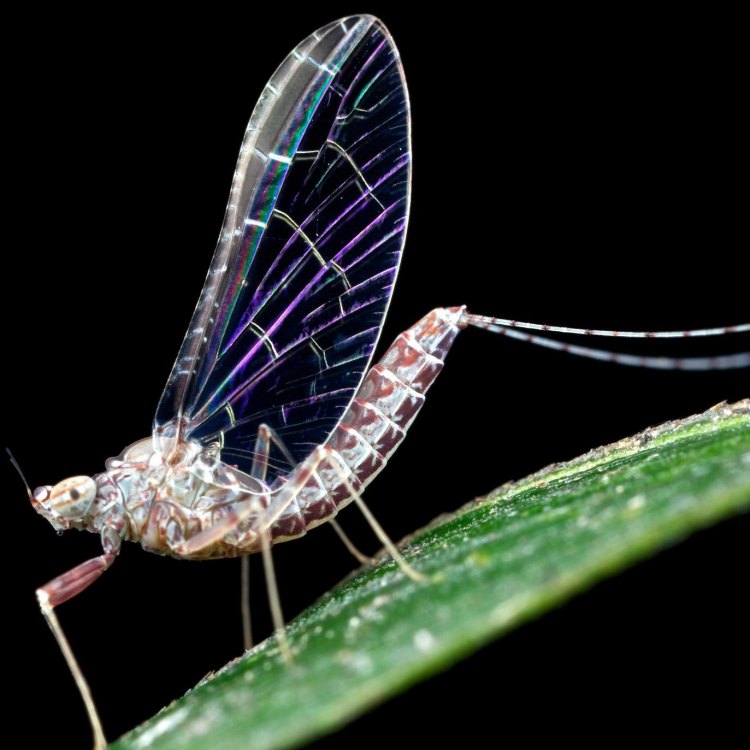
Nature's Aquatic Marvel: The Fascinating Mayfly
Disclaimer: The content provided is for informational purposes only. We cannot guarantee the accuracy of the information on this page 100%. All information provided here may change without prior notice.

